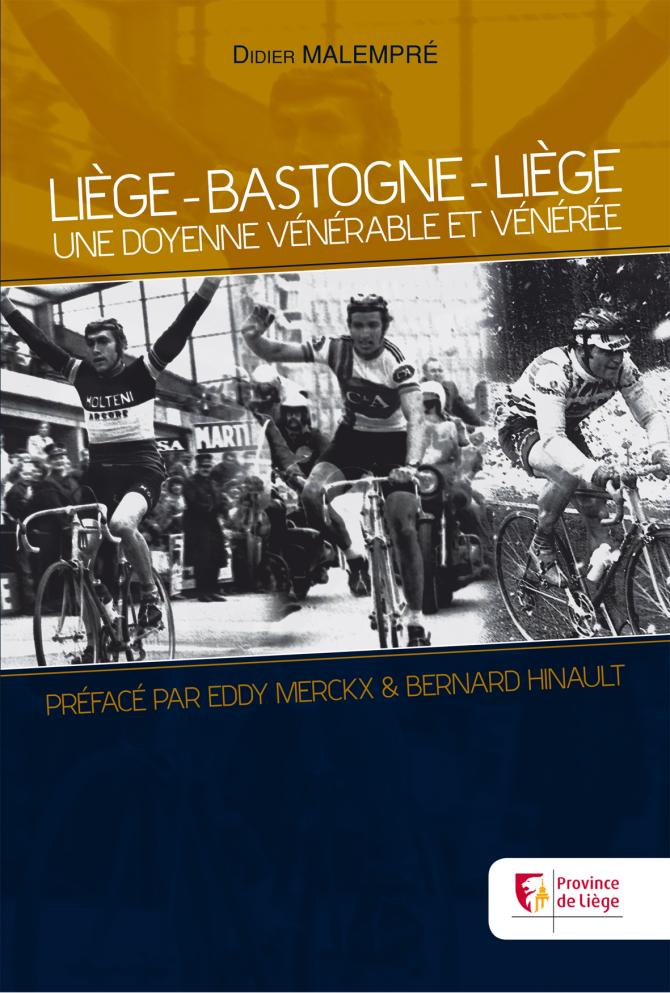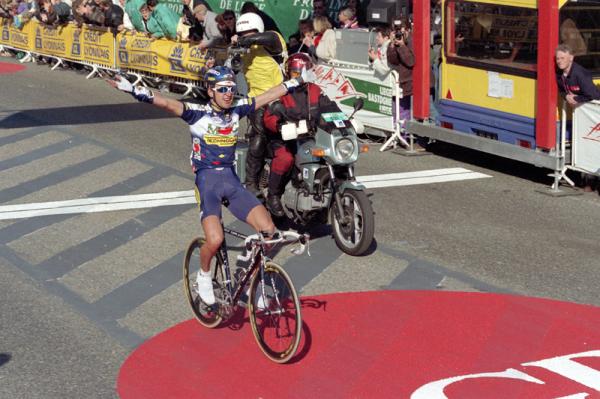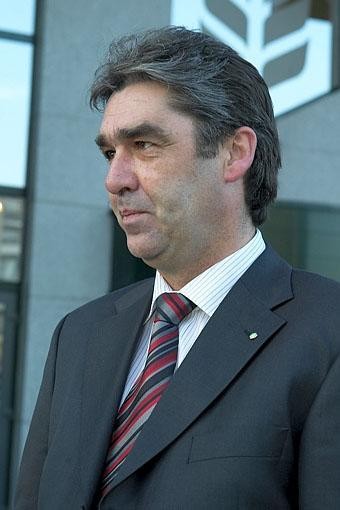Liège celebrates 100th year of La Doyenne with book, exhibition, memorials
Commemoration of Léon Houa’s first victory to take place Saturday



Liège-Bastogne-Liège is set to celebrate the 100th edition of the race in style, with a plaque due to be unveiled in honour of Léon Houa, the first ever winner of the race back in 1892, this Saturday at midday on the outer wall of the house in central Liège where Houa was born.
Houa’s first win came after an early start to the race - at 5.40 in the morning - when he was one of 33 amateurs to set off towards Liège. As early as the first climb, the Cote de Aywaille, Houa was alone at the head of the field, completing the course in 10 hours 48 minutes and 32 seconds, averaging a little over 23 kph with a bike weighing 11.6kg.
Given the course was then known as Liège-Bastogne-And Back rather than Liège-Bastogne-Liège, the race used exactly the same route for both the outward and return segments, and on his way back to Liège Houa passed several competitors, by then lagging over an hour behind him, still heading towards Bastogne. Houa, later the Belgian national champion, went on to win the first three editions of Liège-Bastogne-Liège.
An exhibition about the race is also taking place in Liège, running until the middle of May, whilst for those unable to make it to Belgium, a book containing a detailed history of the race has just been published by a local journalist, Didier Malempré.
“Given this is the 100th edition, it was the right moment to write it,” Malempré told Cyclingnews, “although I have a lot of fond memories of the race as a spectactor and reporter, too.
“I first watched it as a spectator in 1987, when [Moreno] Argentin beat Claudy Criquielion and Stephen Roche after catching them in the last kilometre. I wasn’t a journalist at the time, I was a huge fan of Criquielion and was very disappointed he lost, but it was maybe that finale that sparked my love of cycling.”
For Malempré, what makes La Doyenne, as the race is known, different from the other Monuments “is the amount of climbing. There are riders who say it is like racing a mountain stage of the Tour, and when you calculate it, they’re right. After Bastogne [km 100 of 260], there’s barely a metre of flat.” Indeed, the 10 or so climbs are reckoned to total around 4,000 metres of vertical climbing, as much as in a major Tour stage in the Alps or Pyrenees.
Get The Leadout Newsletter
The latest race content, interviews, features, reviews and expert buying guides, direct to your inbox!
“So if you don’t have the physical power, it doesn’t matter how good your team is or how clever your tactics can be, you won’t win. That makes it the most beautiful Classic of them all, because it’s always won by the rider who has got the best form.”
Strategy, according to Malempré, is never as relevant as physical power when it comes to winning Liège: “I spoke to [Paolo] Bettini about his victory in 2000, and he said ‘I wasn’t strong that year, I was really, really, strong. Unlike Flanders, or Milan-San Remo, this is the only Classic where if you’re not on a good day physically, you can’t win.
“That also explains why sometimes you’ll get a little-known rider who wins Liège because they’ve got really good form on one day of their career and then they don’t ever get quite as good again in their career.”
Being from Liège himself, he says he is a big fan of the two wins by Joseph Bruyere, who was the local star (and a top domestique for Eddy Merckx) in the 1970s. However, his personal favourite of the 100 editions is when Bernard Hinault won Liège-Bastogne-Liège in 1977: “That’s not the famous one [1980], when Hinault won in a snowstorm after an 80 kilometre break and hardly anybody [21] riders could finish because the weather conditions were so bad.
“Back in 1977, nobody knew who Hinault was. He was right at the start of his career, his only big previous win that season had been Ghent-Wevelgem, but as [team manager Cyrille] Guimard said at the time ‘you’ve not heard much of him yet, but you will hear a lot of him in the future!”
Didier Malempré: Liège-Bastogne-Liège: Une Doyenne Vénérable et Vénérée (Cefal, 12 euros).
Alasdair Fotheringham has been reporting on cycling since 1991. He has covered every Tour de France since 1992 bar one, as well as numerous other bike races of all shapes and sizes, ranging from the Olympic Games in 2008 to the now sadly defunct Subida a Urkiola hill climb in Spain. As well as working for Cyclingnews, he has also written for The Independent, The Guardian, ProCycling, The Express and Reuters.
